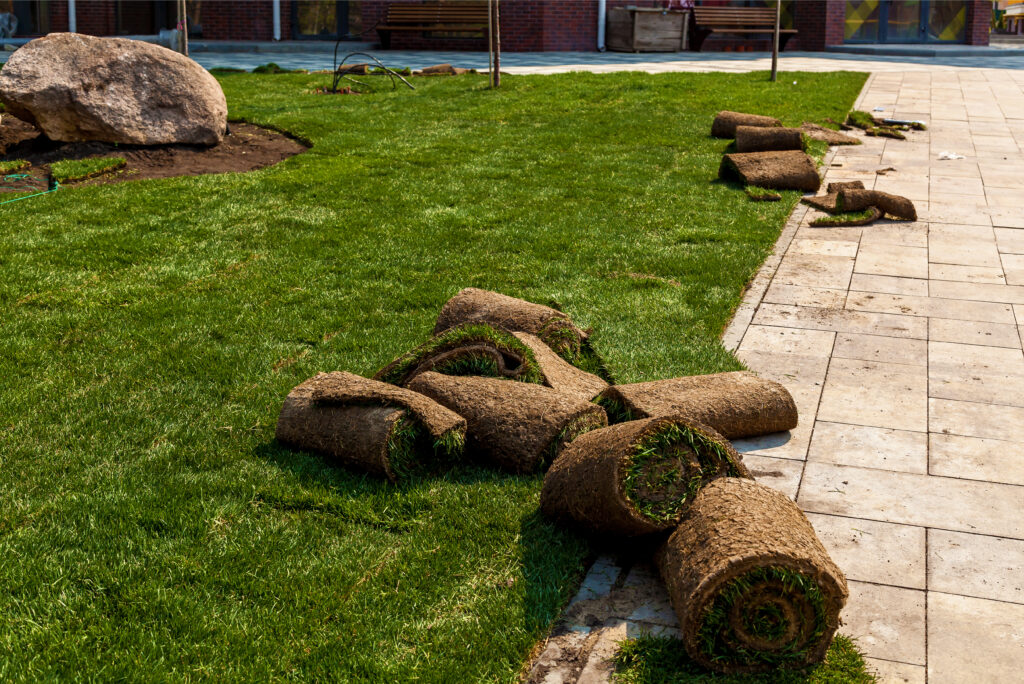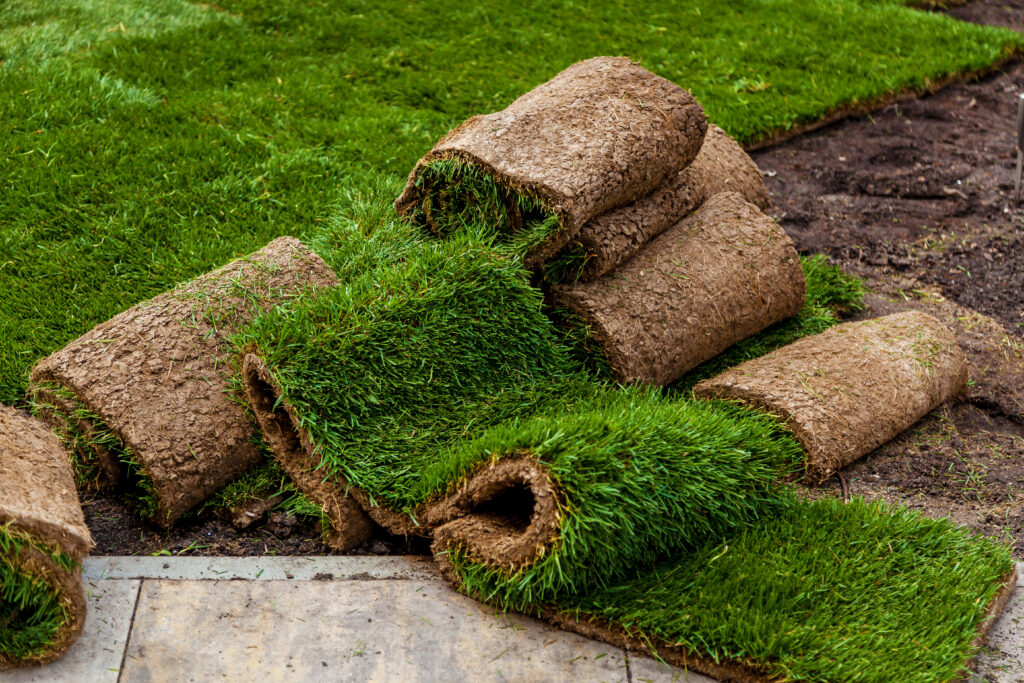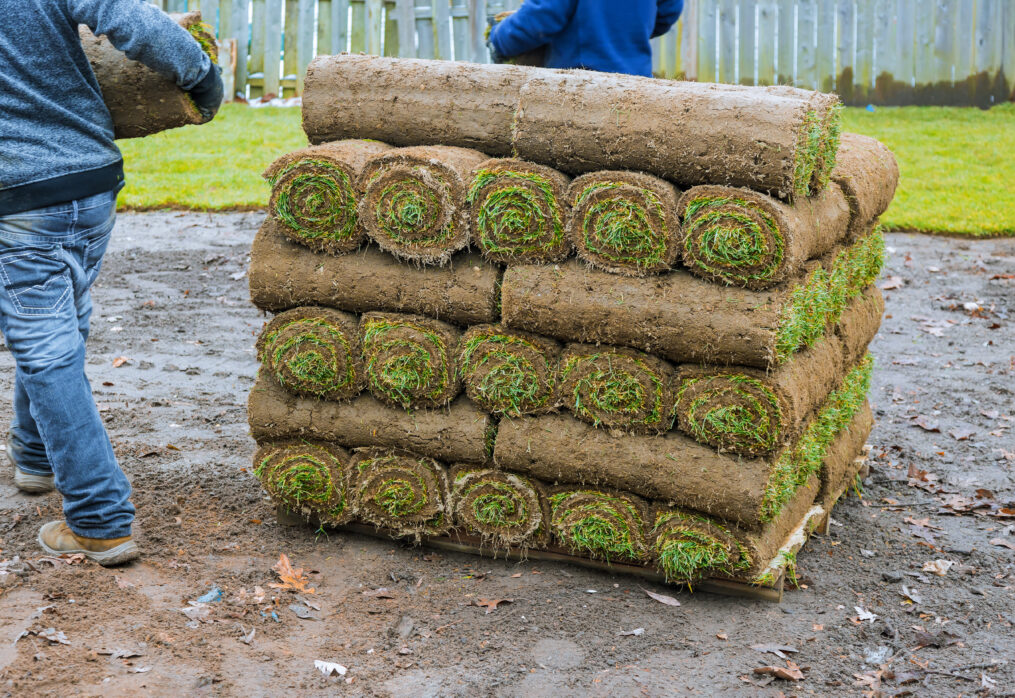Best Natural Turf for Gardens: Top 5 Picks
Selecting the appropriate kind of natural grass can help you to improve the attractiveness of your yard. Apart from providing visual appeal, natural grass helps to create cooler, more pleasant surroundings for your outdoor area. Choosing the appropriate grass type for your garden might be difficult with the several kinds that are now on offer. We have produced a list of the top five natural grass choices for gardens to guide your decision-making. Every type has special qualities that fit particular soils, climates, and upkeep choices.
1. Kentucky Bluegrass
Why It’s a Top Pick? Rich, dark green color and fine-textured blades make Kentucky Bluegrass famous. This type of grass creates a thick and rich lawn, making it ideal for designing an opulent garden. It’s an excellent choice for high-traffic areas in your garden because it’s well-known for its self-repair capacity. Ideal Growing Conditions: Kentucky Bluegrass thrives in cool-season conditions, making it best suited for areas with cold winters and mild summers. Maintaining its rich look calls for consistent watering and direct sunlight. Though it can withstand little shade, it thrives with at least four to six hours of daily sunlight. Maintenance Tips: Maintaining Kentucky Bluegrass in health requires regular watering, mowing, and fertilizing. Aeration also helps to reduce soil compaction and encourage root growth.

2. Bermuda Grass
Why It’s a Top Pick? Because of its remarkable heat and drought tolerance, Bermuda grass is a common choice for warm-season gardens. It creates a dense, carpet-like turf that rapidly spreads and fills up empty areas to create consistency. This kind of grass is well-known for its tenacity and strength, which qualifies for gardens with a lot of foot activity. Ideal Growing Conditions: Bermuda grass needs a whole sun to flourish and thrive in hot areas. Though it performs well in well-draining soils, it is quite flexible to many kinds of soil. It is often utilized in coastal areas and southern regions with regularly mild weather. Maintenance Tips: Regular mowing is necessary to maintain a reasonable height for Bermuda grass. To promote deep root development, it should be fertilized during its growing season—spring to summer—then watered deeply but seldom.
3. Zoysia Grass
Why It’s a Top Pick? The thick, silky texture and vivid green color of Zoysia grass make it a top pick. It has a soft lawn underfoot that is both aesthetically pleasing and comforting. Zoysia grass’s minimal maintenance requirements—that is, less frequent watering and mowing than other grass varieties—are one of its main advantages. Ideal Growing Conditions: Zoysia grass fits well in warm and transitional regions. This adaptable grass can withstand moderate drought, heat, and shade. Because Zoysia grows slowly, general lawn maintenance and mowing frequency are lessened. Maintenance Tips: Mowing Zoysia grass consistently throughout the growing season and fertilizing early spring and late summer will help it maintain its best appearance. Moreover, advised to keep good soil conditions in aeration once a year.

4. Fescue grass
Why It’s a Top Pick? Shaded gardens and colder climates would greatly benefit from fescue grass. It comes in tall and fine varieties, each with benefits. The deep root systems of fescues are well-known for improving drought tolerance and providing stability in sloped regions. Ideal Growing Conditions: Fescue grass does best in shady settings with low sunshine and cool-season conditions. It is more prevalent in areas with mild winters and warm summers. Its resilience to adverse soil conditions qualifies it as a wonderful choice for several garden settings. Maintenance Tips: Periodic fertilization and regular watering—especially during dry spells—will help Fescue grass to remain luxuriant. Higher mowing heights help to maintain moisture and relieve grass blade stress.

5. Buffalo Grass
Why It’s a Top Pick? Buffalo grass is an ideal native grass species for gardeners looking for a low-maintenance, environmentally friendly turf alternative. It’s a perfect fit for sustainable gardening since it calls for little mowing, fertilizing, or watering. Buffalo grass’s smooth, fine texture and light green color fit naturally occurring garden settings. Ideal Growing Conditions: Buffalo grass is quite drought-tolerant and thrives in warm-season conditions, so it is fit for desert and semi-arid areas. It thrives in well-drained soils and full-sun conditions, where it may create deep roots to support its low water needs. Maintenance Tips: Buffalo grass calls for very minimal upkeep. Usually, once a month during the growing season, mow it just when necessary. It keeps its color and health with occasional fertilization using a low-nitrogen mix.
In summary
The ideal natural grass for your garden will depend on a variety of factors, including climate, type of soil, sun exposure, and maintenance preferences. There is a great turf choice to fit your demands, whether your tastes are for the low-maintenance attractiveness of Buffalo grass, Bermuda grass’s resilience, or Kentucky bluegrass’s lushness. Choosing the correct grass variety can help you design a lovely, environmentally friendly garden that improves your outdoor area for many years to come. See Balaji Nursery for further direction on choosing the perfect grass for your garden or professional lawn installation project. Allow us to help you create a green oasis out of your yard!
I recommend checking out:
- How to Plant Lawn Grass: A Step-by-Step Guide
- Mowing Heights By Season And Grass Type
- What Is the Best Warm Season Grass for Your Lawn
- Natural Weed and Grass Killer Recipe for a Chemical-Free Lawn
- What type of machine is used to cut grass?
- 5 gorgeous flowering plants to bring home in summer
- 10 Stress Relieving Indoor plants for home
- 10 plants you can easily grow in a bottle
- 5 Easy Tips to Maintain a Tulsi Plant at Home
- 5 Medicinal Plants to Grow at Home
- 10 palm plants to grow at home
Last Updated on 1 year ago by Anjali Mehra Ph.D. in Horticulture (Punjab Agricultural University)
- Best Lawn Grass for High-Footfall Religious Places in Punjab - December 29, 2025
- Why Lawn Grass Fails After Installation (Real Indian Case Studies) - December 25, 2025
- Nilgiri Grass vs Korean Grass – Price, Look & Maintenance Compared - December 23, 2025
